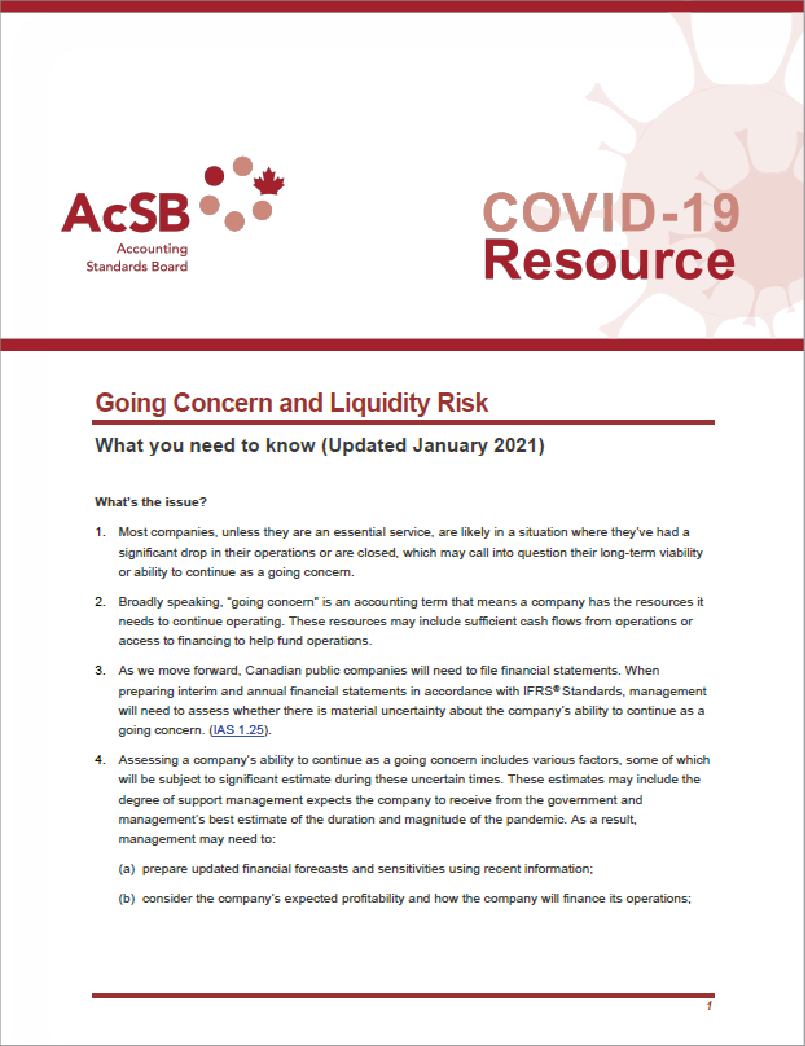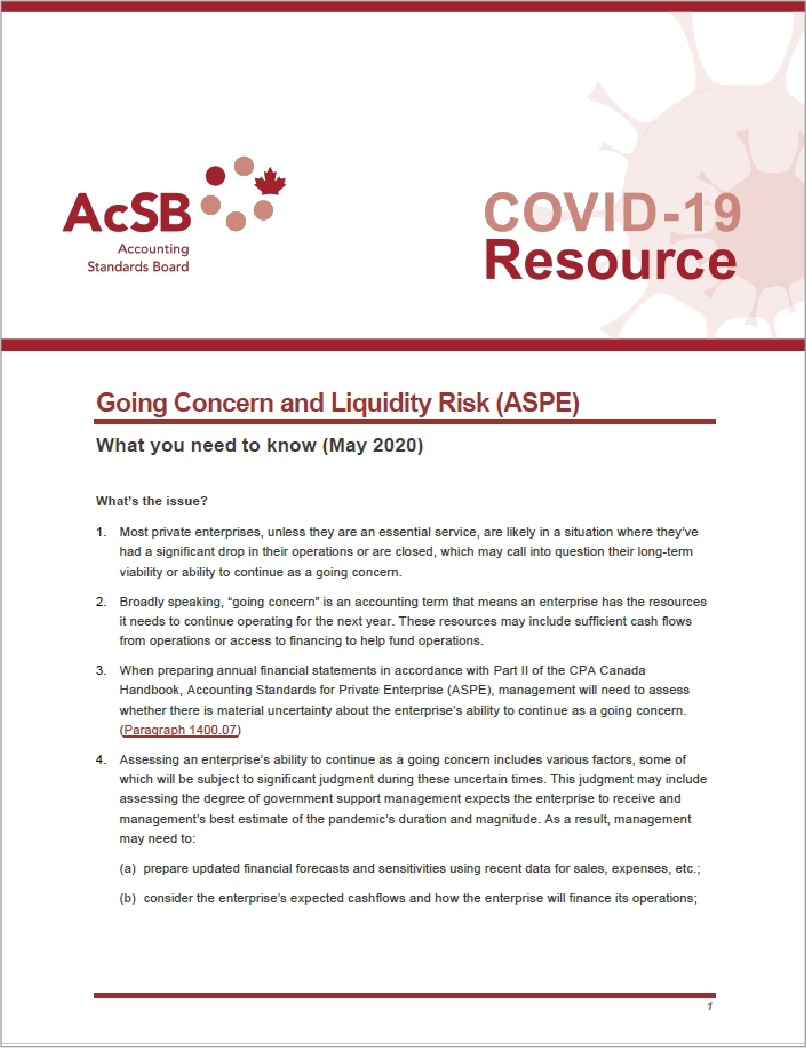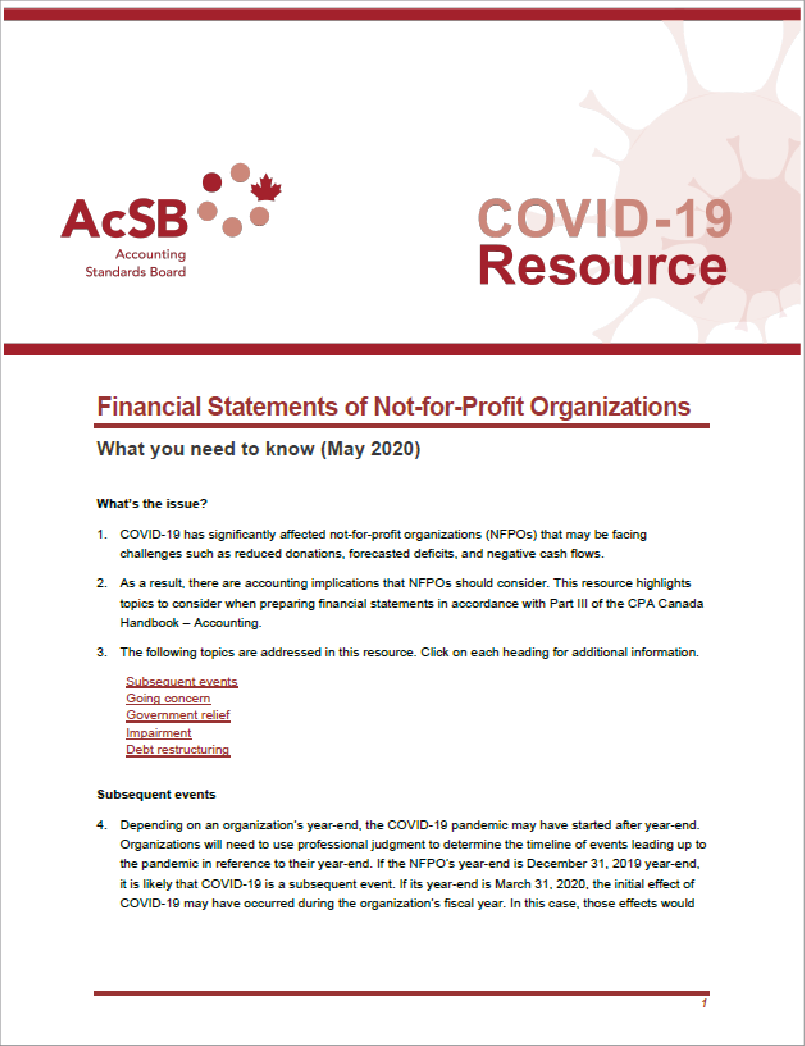The COVID-19 pandemic continues to cause considerable deterioration in economic conditions for many organizations while increasing uncertainty for others. With significant organizations profiled in news stories for insolvencies, bankruptcies, and other financial difficulties, it’s more important than ever to keep going concern top of mind.
What is going concern?
Broadly speaking, going concern means an organization has the resources to continue operating. These resources may include cash flows and/or access to financing to help fund operations.
Management needs to assess whether COVID-19-related events or conditions, either individually or collectively, may cast significant doubt on an organization’s ability to continue as a going concern. And in extreme cases, the going concern assumption may no longer be appropriate as a basis for the preparation of the organization’s financial statements.
Part I: IFRS® Standards
When preparing interim and annual financial statements in accordance with IFRS® Standards, management assesses whether there is material uncertainty about the organization’s ability to continue as a going concern.
When assessing an organization’s ability to continue as a going concern, management will need to consider all information about the future, which is at least, but not limited to, 12 months from the end of the reporting period. Read more about Close Call Going Concern Assessments, which includes guidance on accounting and auditing considerations.
After its assessment, management may conclude that there are no material uncertainties that cast significant doubt about the organization’s ability to continue as a going concern.

Download: Going Concern and Liquidity Risk (IFRS Standards)
Part II: Accounting Standards for Private Enterprises (ASPE)
When preparing annual financial statements in accordance with Part II of the CPA Canada Handbook, management needs to assess whether there is material uncertainty about the enterprise’s ability to continue as a going concern.
This process includes many factors, some of which will be subject to significant judgment during these uncertain times. Considerations may include the degree of expected government support, and management’s best estimate of the pandemic’s duration and magnitude.

Download: Going Concern and Liquidity Risk (ASPE)
Part III: Accounting Standards for Not-for-Profit Organizations
When preparing financial statements, management assesses the organization’s ability to continue as a going concern. In making this assessment, management should consider all available information about the future, which is at least, but not limited to, 12 months from the balance sheet date.

Download: Financial Statements for Not-for-Profit Organizations